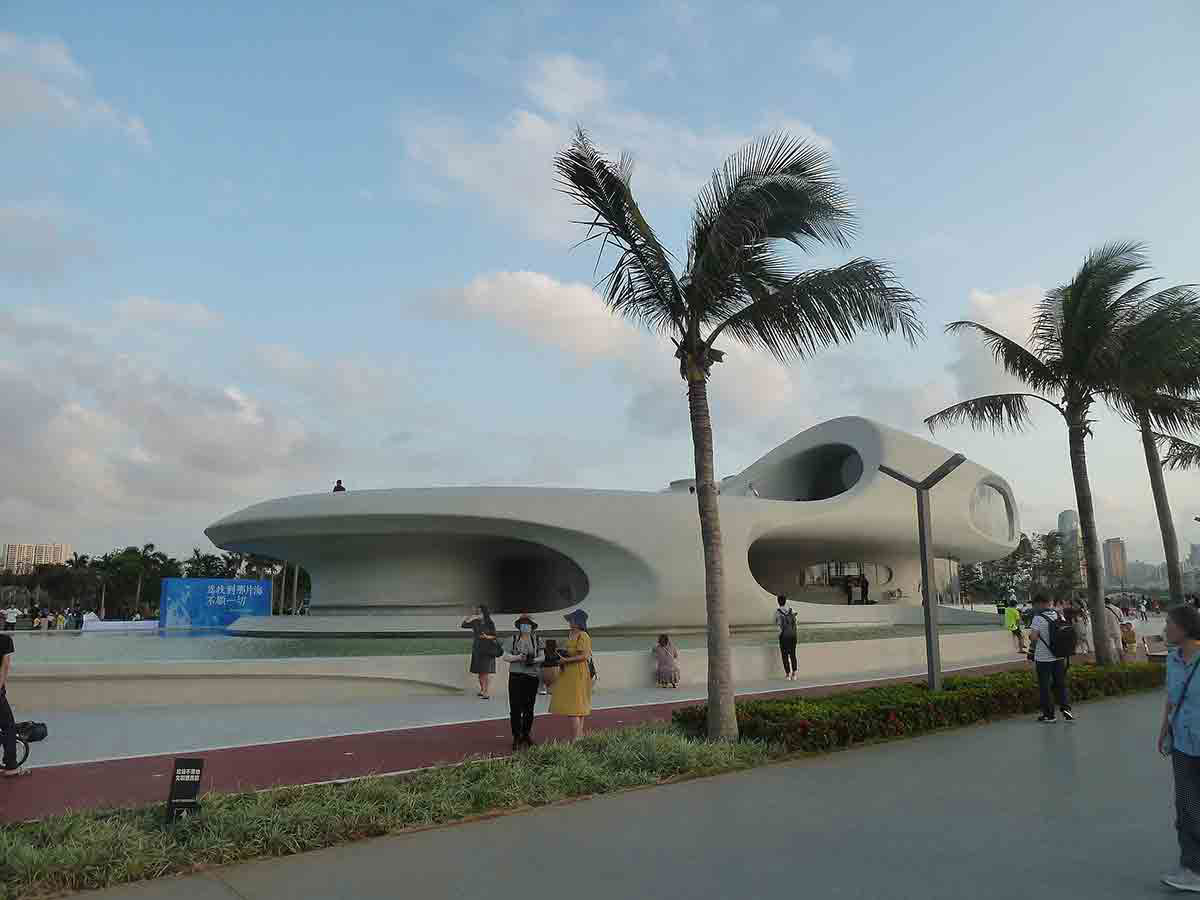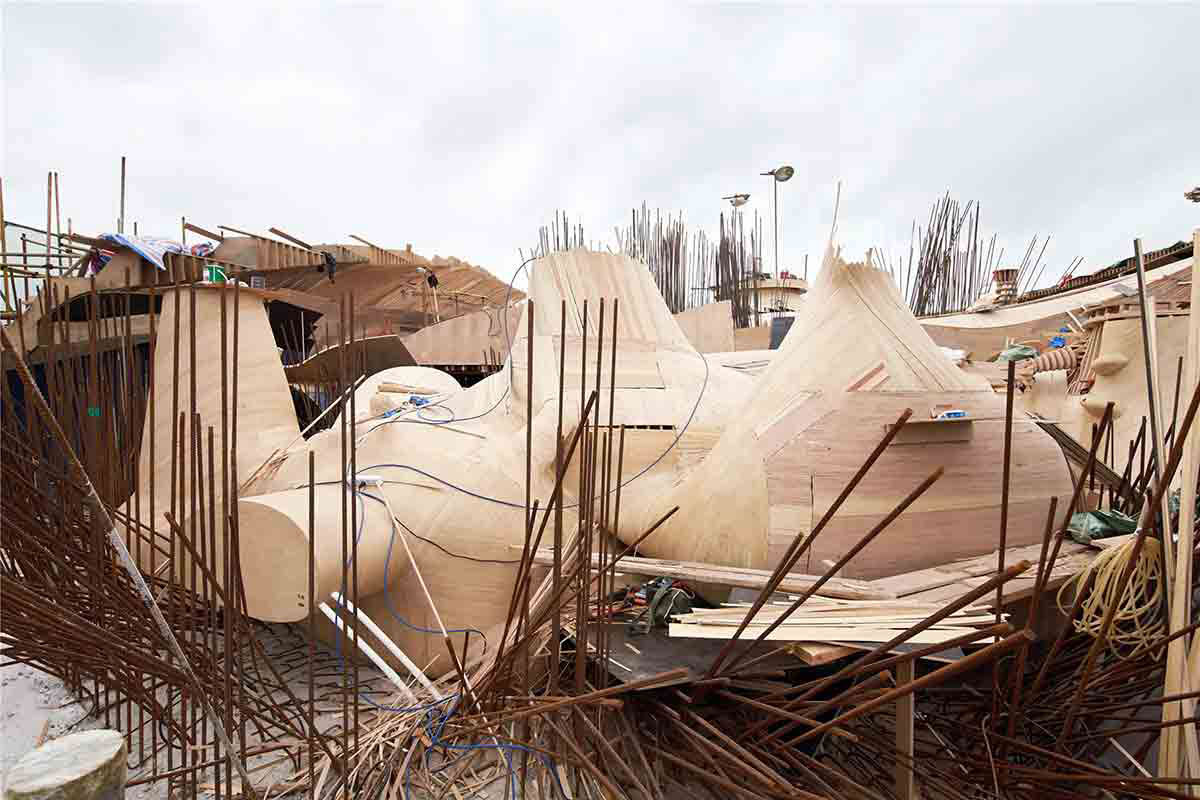Traditionally, concrete formwork was made on site with wooden or metal moulds, suitable for the designs of the time, but decidedly limited for complex constructions. They were time-consuming to assemble and manifestly inaccurate in detail. However, with the incorporation of 3D printers and CNC (Computer Numerical Control) cutting technology, concrete formwork has evolved considerably.
In today’s construction industry, thanks to 3D printing and CNC cutting, formwork is made of precast parts with complex, curved shapes and millimetre-precision. This technology facilitates the creation of organic and fluid structures, in line with contemporary architecture that seeks to imitate the forms of nature or create iconic buildings.

An outstanding result of this evolution is the Wormhole Library in Haikou, China, designed by MAD Architects. This architectural project, characterised by its curved and continuous shapes, used prefabricated formwork modelled by CNC cutting and 3D printing. This ensured the precision and continuity of its surfaces, and made possible joints disappear.


Images: MAD Architects.
By Guillermo Ferrer, senior architect in Amusement Logic’s architecture department.






